Sponsor

Official Brewery

Tailor-made Sponsors


Special Supporters






Exhibitors




-
KOREA AEROSPACE INDUSTRIES, LTD. As a total solution provider in aerospace, KAI has been taking a leading role in national aviation and space industry through indigenous development of fixed-wing, rotary-wing, aerostructures, MRO and space products. Currently KFX and LAH/LCH program are under development. For space business which is future growth engine, KAI has invested in the space domain since 1994 and accumulated its space capabilities through actively participating in national space development programs such as Korea Multi-Purpose Satellites, Compact Advanced Satellite 500, Defense Satellite and small satellite, as well as Korea Space Launch Vehicle.


-
BORYUNG Boryung is a healthcare investment company founded in 1957 and headquartered in Seoul, South Korea. We dedicate our purpose to the progress of healthcare and investment by sharing ethos to build limitless opportunities and the facilitation of robust business growth. We will invest with a long term perspective and solidify the trust of our partners through transport and fair corporate activities, thereby becoming an irreplaceable, essential company for human health. Moreover, we will do our best to enable humans to perform freely in outer space, the stage of new opportunities for humanity.


-
Southwest Research Institute The Southwest Research Institute Space Sector comprises three divisions:
• Space Science in San Antonio, Texas, USA
• Space Systems in San Antonio, Texas and Durham, New Hampshire, USA
• Solar System Science and Exploration in Boulder, Colorado, USA
We are a center of excellence for space science and space instrumentation primarily in Heliophysics and Planetary Science with leadership roles in the following NASA missions currently operating or in development: New Horizons (PI), Juno (PI), MMS (PI), Lucy (PI), PUNCH (PI) We also provide major instrumentation to NASA, NOAA and ESA missions, including Europa Clipper, JUICE, Bepi Columbo, Solar Orbiter, IMAP, SWFO. We provide spacecraft, project management, and mission and science operations for missions such as CYGNSS and PUNCH

-
Satrec Initiative Satrec Initiative (SI) is a world-leading company providing high-performance satellite systems and services for Earth observation missions. We have contributed to the success of over 30 international and domestic space programs over the past 30 years.
With two subsidiaries, the SI group has four vertically-integrated business areas in Earth observation. The parent company, SI provides Earth observation satellite and ground systems, SI Imaging Services focuses on satellite imagery distribution, and SI Analytics provides AI-based geospatial analytics solutions.
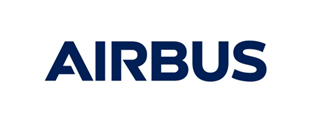
-
Airbus Defence and Space With cutting-edge capabilities and decades of experience, Airbus has all that it takes to design, develop and operate major space systems and deliver powerful insights with our space-based services.
Around the globe, commercial and government customers alike rely on Airbus' leading space technology and solutions.
We offer telecommunications satellites for any mission, very-high-resolution Earth observation instruments, unique deep space missions, flawless International Space Station operations and are a key contributor in bringing humans back to the moon. From the smallest electronic parts and spacecraft equipment to in-orbit delivery of satellites and associated services, reaching for the stars is our daily business.
Airbus is a global leader in aeronautics, space and related services.
Come and see us on stand XXX to find out more.
Company Website: https://www.airbus.com/space.Twitter/Facebook: @AirbusSpace
Instagram: @airbus_space
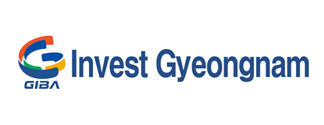
-
Invest Gyeongnam by GIBA InvestGyeongnam supports global enterprises entering South Gyeongnam Province, which boasts a well-established aerospace industry and is home to the newly launched Korea AeroSpace Administration. We foster local business growth globally by creating an attractive investment environment. Leveraging our extensive knowledge, we provide optimized services tailored to global companies and investors , collaborating with industry-specialized institutions and private-sector experts. InvestGyeongnam is committed to being a reliable partner for foreign investors and local companies aspiring to go global. We support your innovation and success.


-
CONTEC Co., Ltd. CONTEC, founded in 2015, is a leading space company dedicated to evolutionizing satellite operations through its global network of ground stations. With a primary focus on providing ground station services, CONTEC aims to ensure seamless communication between satellites and ground-based systems. Since the official launch of its services in 2019, marked by the installation of Korea's first commercial ground station in Jeju, CONTEC has rapidly gained recognition as a trusted partner for major satellite operators.
Driven by a commitment to excellence, CONTEC continues to expand its global footprint, extending its services to clients across America, Europe, Africa, and Asia. By strategically positioning its ground stations worldwide, CONTEC offers enhanced coverage and accessibility to satellite operators, enabling them to optimize their missions and effectively manage their satellite fleets. In addition, CONTEC has developed advanced technologies to process and analyze raw satellite data to deliver high-quality satellite data processing services and make use of data for valuable insights. These insights find applications in a wide range of industries, enabling end-users to make informed decisions.
CONTEC has three subsidiaries, CONTEC Space, CONTEC Earth Service (CES) and CONTEC Space Optics (CSO). CONTEC Space is located in Luxembourg for collaborations in Europe, CONTEC Earth Service provides satellite imagery and value-added satellite image application and CONTEC Space Optics provides technologies in high-resolution imaging for space missions. In November 2023, CONTEC successfully went public (IPO) on the Korean Stock Exchange (KOSDAQ). In addition, CONTEC launched its 1st satellite ‘Oreum-Sat’ in March 2024.
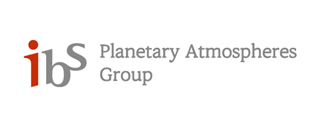
-
Planetary Atmospheres Group, Institute for Basic Science The Institute for Basic Science (IBS) is a national research institute established by the South Korean government to conduct world-class basic science research. IBS was born under 2011 legislation, which created the International Science Business Belt, an innovation cluster that combines science and business. Starting with selecting the first Research Centers in 2012, IBS operates 2 research institutes and 29 Centers in mathematics, physics, chemistry, life sciences, interdisciplinary, and Earth science.
The Planetary Atmospheres Group (PAG) started in 2022 at the headquarters of IBS in Daejeon, South Korea. Our research goal is to characterize atmospheres on other planets and compare them with the Earth’s to understand unique and common physical processes in the atmospheres of planetary systems. We currently focus on the atmosphere of Venus and plan to utilize low-Earth-orbit CubeSats and ground-based telescopes to monitor Venus on a decadal time scale.
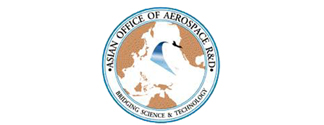
-
United States Air Force, Asian Office of Aerospace Research and Development Located in Tokyo, Japan, the mission of the Asian Office of Aerospace Research and Development (AOARD) is to integrate and support AFRL fundamental research with discoveries of emerging foreign science. AOARD's geographical area of responsibility includes Asia and Pacific Rim countries, to include India and Australia. AOARD is a field office of the Air Force Office of Scientific Research (AFOSR), located in Arlington, VA., USA.
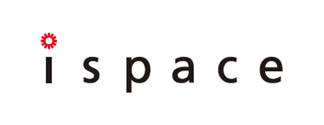
-
ispace.inc. ispace, a global lunar resource development company with the vision, “Expand our planet. Expand our future.”, specializes in designing and building lunar landers and rovers.
ispace aims to extend the sphere of human life into space and create a sustainable world by providing high-frequency, low-cost transportation services to the Moon. The company has business entities in Japan, Luxembourg, and the United States with approximately 300 employees worldwide.
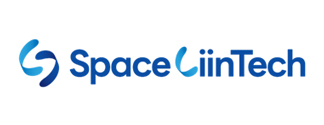
-
Space LiinTech Inc. Space LiinTech, a pioneering startup established in 2021 and headquartered in Daejeon, South Korea, stands at the forefront of innovation. We offer unique platform technology for new drug development and manufacturing using microgravity.
Our business model is rooted in space medicine, a field brimming with high commercial potential. This includes new drug development through synthetic proteins or membrane proteins, as well as cell therapy culture and production. We are currently focused on developing a platform that enables protein crystal growth, a crucial process for structure-based new drug development, in space microgravity. This is a task that might be challenging or even impossible on the ground due to the influence of gravity.
Space LiinTech's drop tower system is a versatile tool capable of generating space microgravity conditions on the ground. This advanced technology allows us to replicate a broad spectrum of gravitational environments, from the intense launch process of the space medicine platform into space to the delicate operation in low orbit and the challenging recovery to the ground. Unlike our competitors, we operate our drop tower facility, which empowers us to develop a low-orbit platform that is not only cost-effective but also highly reliable, making us a formidable player in the space industry.
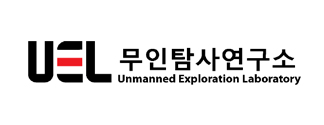
-
Unmanned Exploration Laboratory The unmanned research institute is a family company of the Korea Aerospace Research Institute and specializes in developing Korea's first and only lunar rover. By developing a rover to carry out missions such as space exploration and the construction of a base in the lunar environment, it aims to verify the rover's driving performance on the lunar surface for the first time in Korea and to survive in extreme environments and collect environmental data.
The lunar rover at the Unmanned Exploration Laboratory has developed elemental technology to develop rovers that can drive in extreme environments.
1. Development of rovers capable of performing missions in a variety of environments
2. Lightweight and miniaturized rovers for limited payloads
3. Construction of a Ground Test Environment Using Artificial Moon Soil
4. Securing technology for moon resource utilization (ISRU)
We have prepared a system to develop our own lunar rover by comprehensively utilizing the rover required for lunar exploration, the test facility to verify the performance of the rover, and the onboard technology for performing the rover's mission.

-
THALES ALENIA SPACE ITALIA Drawing on over 40 years of experience and a unique combination of skills, expertise and cultures, Thales Alenia Space (Thales 67% and Leonardo 33%) delivers cost-effective solutions for telecommunications, navigation, Earth observation, environmental management, exploration, science and orbital infrastructures.
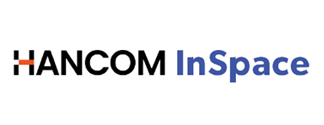
-
HANCOM InSpace Hancom InSpace was established in 2012 and has since become a leading provider of image analysis solutions for government and public agencies. The company has experienced remarkable growth through its collaborations with organizations requiring ground station systems for satellite control and operation as well as satellite image analysis software.
Today, Hancom InSpace has expanded its business scope beyond satellite imagery to encompass drones and high-resolution long-range PTZ (PAN-Tilt· Zoom) surveillance cameras..The company offers ground station software for integrated control and operation of diverse media and provides AI-based real-time image analysis services.
Hamcom InSpace is investing in research and development in the field of image utilization, Leveraging its image data belt. The company is creating a diverse range of products that contribute to a safer and happier future for humanity, including unmanned drone operation solutions, anti-dron solutions, and intelligent unmanned surveillance and reconnaissance solutions.


-
Korea Polar Research Institute (KOPRI) The Korea Polar Research Institute (KOPRI) conducted various research activities based on the four strategic goals of "Investigation of causes of environmental and ecosystem changes through polar observation and diagnosis”, "Development of polar climate observation and prediction technology to respond to climate change", "Development of technology for utilizing biological resources and low-temperature characteristics", and "Advancement of research infrastructure for the exploration of the unexplored polar regions". Most of the research activities are based on polar research stations including Dasan station, Ny-Ålesund (Norway) in the Arctic and King Sejong and Jang Bogo stations, in Antarctica and an ice breaker, Araon operated nearly year-around in the Arctic and Antarctic Sea. The space and upper atmospheric research group within the Division of Atmospheric Sciences conducts various ground-based observations for the space environments and the upper atmospheric changes as well as the aurora in the Arctic and Antarctic stations. Moreover, the group also performs numerical modeling studies on the global atmosphere, including the lower and upper atmospheres, to investigate the aurora, the magnetosphere-ionosphere coupling, upper polar atmospheric variabilities, atmospheric gravity wave, etc.
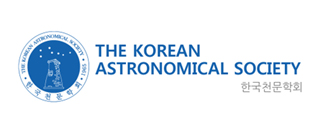
-
The Korean Astronomical Society Founded in 1965, the Korean Astronomical Society (KAS) is the leading professional organization for astronomy in the Republic of Korea, with ~1,900 members. The KAS aims to promote the development of astronomy in the Republic of Korea through facilitating the interactions amongst members, supporting astronomical research activities, sharing up-to-date astronomical knowledge and discoveries, and educating the next generation astronomers and the public. The KAS officially joined the IAU in 1973. The Society has been well recognized for her significant progress in country and beyond, with growing numbers of memberships, exceptional research programs, and committed activities. The KAS publishes a peer-reviewed research journal, the Journal of the Korean Astronomical Society.
Biannual meetings in spring and fall are regularly attended by over 300 members. Non-regular meetings such as various symposia, workshops, researches, and public programs are also initiated and organized by the KAS. The KAS will celebrate 60th year anniversary in 2025.

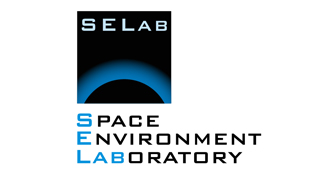
-
Selab.inc SELab, Inc.(Space Environment Laboratory, Inc.) is Earth's environment technology and intelligence company, specializing in SSA(Space Situation Awareness) solution, Imaging(signal) solutions, data analytics service and scientific data systems delivered to our partners since it was founded in 2002.
SELab has an extensive experience of the Environmental data analytics and the core algorithm applied for better understanding of the Earth and beyond. We help governments and businesses improve their decision making and risk assessment in New Space Era.

-
DAEJEON TECHNOPARK Establishing the systematic cooperation system of industry-university-institute-government, Daejeon Technopark, the regional innovative base institute, promoters technology advancement and the start-ups of technology-intensive companies and also contributes to regional economic revitalization as well as the national economic development.

-
Space: Science & Technology, a Science Partner Journal Publication description: “Open Access journal Space: Science & Technology, published in association with BIT, promotes the interplay of science and technology for the benefit of all application domains of space activities. It particularly welcomes articles illustrating successful synergies in space programs and missions. For more information, please go to: https://spj.science.org/journal/space.”
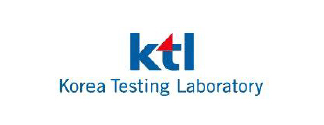
-
Korea Testing Laboratory KTL contributes to securing public safety, improving corporate competitiveness, and increasing export by objectively and accurately verifying if the corporate R&D outcomes meet the performance and safety requirements in domestic and overseas markets.
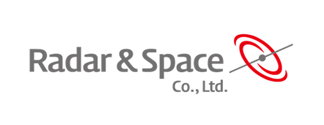
-
Radar&Space Radar&Space has been established in 2012 as a rare Satellite consulting Company in Korea now expanding to many areas in space businesses such as Satellite Communication, Satellite Control, Space Surveillence System. With high level of expertise and excellent professional individuals, Radar&Space also covers in vast Space research areas for Space Weather Disaster with many international and domestic companies, institutes and military.
Based on the 12 years of experiences, Radar&Space is now looking into the chance for great leap to become world leading Space company.
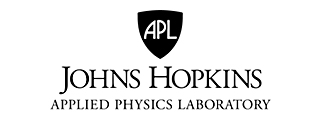
-
Johns Hopkins University, Applied Physics Laboratory Since the dawn of the Space Age, APL has expanded the frontiers of space science and technology. We took the first picture of Earth from space, invented satellite navigation, dispatched spacecraft across the solar system, and demonstrated technology to advance our nation’s security.


-
Lockheed Martin Corporation Headquartered in Bethesda, Maryland, Lockheed Martin Corporation is a global security and aerospace company that employs approximately 116,000 people worldwide and is principally engaged in the research, design, development, manufacture, integration and sustainment of advanced technology systems, products and services.

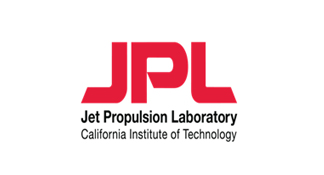
-
JPL The Jet Propulsion Laboratory holds a unique place in the universe. We are a leader in robotic space exploration, sending rovers to Mars, probes into the farthest reaches of the solar system, and satellites to advance understanding of our home planet with a dedicated and diverse population of workforce.
The success of JPL’s first spacecraft, the Explorer I satellite, in 1958 helped lift America into the Space Age. Our spacecraft have flown to every planet in the solar system, the Sun, and into interstellar space in a quest to better understand the origins of the universe, and of life with NASA’s Deep Space Network – built and managed by JPL. It was a camera on Voyager 1 that captured the pale blue dot of Earth from 3.7 billion miles away and corrective optics engineered by JPL that brought the Hubble Space Telescope into focus. JPL spacecraft, science instruments, and airborne missions help humanity study and track climate change, manage natural resources, and respond to disasters.
JPL is taking part in missions to map Earth’s surface. Together with the European Space Agency, we plan to bring Martian rock samples back to Earth in the search for past signs of microscopic life on Mars, and those efforts will also help NASA prepare to send humans to Mars. From Earth to the solar system to the limits of our universe, we invite people everywhere to imagine what is possible.
Managed by Caltech, JPL is NASA’s only federally-funded research and development center.

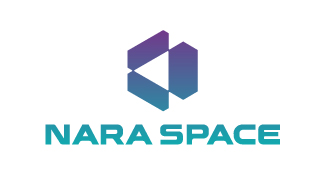
-
NARA SPACE Technology Nara Space, founded in 2015, is building nanosatellite constellations and providing satellite data utilization services to help customers access up-to-date satellite imagery and gain insights in the areas of environmental assessment, disaster monitoring, urban planning, sustainable farming, ship detection, etc.
The company has also launched a service platform called 'Earthpaper,' a comprehensive web-hosted satellite image platform that allows customers to search for and purchase satellite images over their preferred region or location on Earth. Once the Observer constellation, Nara Space's own satellites, successfully operates within a few years, the platform will provide near-real-time access to customized satellite imagery. Nara Space has also developed its own Super Resolution (SR) algorithm, which can increase the spatial resolution of satellite images by up to three times. With this technology, the company aims to upgrade Observer-1's Ground Sample Distance (GSD) from its native 1.5 meters to 0.5 meters.

-
DRB DRB has significantly contributed to the development of South Korea’s industry through its expertise in rubber belt products for power transmission. As a global leader in automotive parts and tracks, DRB is now expanding its horizons into automation, robotics, and the Autonomous Mobile Robot (AMR) industry.
Embracing the opportunities of the space age, DRB is preparing for the future with initiatives like the ‘DRB Space Challenge’, demonstration a strong commitment to pioneering the creation of South Korea’s NewSpace industry ecosystem.


-
INNOSPACE INNOSPACE is an aerospace manufacturing company & aerospace engineering service provider. As the world leaders in hybrid rocket technology, we are dedicated to bringing reliable, safe & economical solutions to the space industry in the foreseeable future.

-
NASA NASA’s Science Mission Directorate inspires the learners of today and develops the leaders of tomorrow. One of our key strategies is to purposefully and actively engage with audiences and learners of all ages to share the story of NASA’s integrated science program. From exoplanet research to better understanding Earth’s climate to understanding the influence of the sun on our planet and the solar system, our work is interdisciplinary and collaborative. Together, we lead a globally interconnected program of scientific discovery that encourages innovation, positively impacts people’s lives, and is a source of inspiration.

-
INAF Italian National Institute for Astrophysics INAF will host the COSPAR 2026 Scintific Assembly in Florence, the capital city of Tuscany, that is a world-famous historical town and it is the host of a major historical University and in particular of the Department of Physics and Astronomy, the INAF Observatory of Arcetri - founded in 1869, when Florence was the Capital City of the Italian Kingdom - the National Institute of Optics of the National Research Council, and the Galileo Galilei Institute of the National Institute for Nuclear Physics. Finally, the Arcetri hill was recently designated a historic site by the European Physical Society due to its considerable historical-scientific interest. Florence also hosts several companies active in the field of space research and innovation. All this makes Florence, the city of the Renaissance, the ideal venue for the event. The congress and exhibition center was conceived inside a masterpiece of Renaissance architecture, a unique venue in the world: a Medicean fortress in the heart of Florence, surrounded by massive walls, combining Renaissance architecture masterpieces and state-of-the-art technologies. A complex of secular and contemporary buildings that is the ideal venue for size and will host the COSPAR Scientific Assembly in 2026.

-
Perigee Aerospace Perigee Aerospace is a Korean space startup that provides the most affordable and frequent ride for small satellites to space with its launch vehicle called Blue Whale. Our developing launch vehicle Blue Whale 1 is a two-stage small space launch vehicle capable of transporting a maximum payload of 200 kg to a 500 km SSO. With a length of 21 meters and a liftoff mass of 20 tons, Blue Whale 1 is the result of Perigee Aerospace's proprietary technology. It incorporates high performance & reliable methane engines, durable & lightweight carbon composite structure, and a reliable & compact avionics. Based on these core technologies, Blue Whale 1 is poised to offer the most reasonable launch services globally.

-
KAIROSPACE Co., Ltd. We are a space solution provider based in South Korea, driving innovation and excellence in the space industry. Our team has been in the space industry for over two decades, and our path has been defined by a multinational team that embodies expertise, visionary thinking, and an unwavering commitment to "High Quality and Excellent Service." Gathered from diverse backgrounds, our team’s collective pursuit orbits around these guiding principles, ensuring that our clients recognize and return for the exceptional standards we uphold.

-
SI Analytics SI Analytics is an advanced AI-based company analyzing satellite, aerial, and drone imagery data. Founded in 2018, we empower GEOINT specialists to focus on anomaly analysis through GeoAI Pack. Our end-to-end satellite imagery analytics platform ‘OVISION’ enhances resolution, enabling Near real-time target recognition for effective Earth monitoring. We develop innovative and responsive solutions for diverse sectors such as D&I, agriculture, weather, and civil government. We are devoted on provisioning the most effective AI solutions, to empower analysts through Earth Observation and AI, shaping a safer, sustainable world.

-
Elsevier Elsevier is a global information analytics business that specializes in providing digital information solutions to professionals and researchers in various fields. It is renowned for its role as a leading publisher of scientific, technical, and medical literature. Elsevier offers a vast array of online tools, databases, and journals that cater to the needs of scientists, healthcare professionals, educators, and students worldwide. Additionally, Elsevier provides analytics and research intelligence services to support decision-making processes in academia, industry, and government.

-
SOLETOP Inc. Soletop is known for innovative software technology and field-proven engineering capabilities for applications in satellites, unmanned crafts. From factory test to operation, the Defense and Aerospace industries rely on Soletop to solve its application problem. Small satellite integration/Consultation Soletop’s small satellite team has the capability to provide customers with one-stop solutions for building a small satellite. We can provide technical support for all the subsystems for advanced missions. The complete avionics support is available and customizable as per the customer’s requirements. The user-friendly ‘plug and play’ approach is accompanied by our collaboration with key manufacturers across the globe. As a small satellite systems integrator, we can offer a complete solutions from payload, platform to ground segment and applications for your needs.
The leader of the Commercial-led Micro Satellite industry in the New Space eraThe Sole-source of Space Solar Array System Provider in KoreaThe exclusive dealership of Space grade Solar Cell Array in KOREA
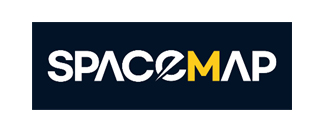
-
SpaceMap Inc. “We aim to provide the best-possible solutions in real-time or near real-time for decision-making problems in space.”
SPACEMAP has developed transformative space collision prevention methods. In a landscape where satellites navigate increasingly crowded orbits, the risk of collisions becomes a pressing concern. Our mission is to present an autonomous & convenient software for safer, more efficient & sustainable space. We will produce the best-possible solutions in real-time or near real-time for all decision-making problems in space.
- Astro-1; The Guardian for Safety
Astro-1 features conjunction assessment and optimal collision avoidance for all space vehicles for both orbital and non-orbital motions in a unified algorithm.
- Astro-Orca; The Optimizer for Space
Astro-O features optimizations including data transmission in multi-orbits, launch optimization, shuttle logistics for space gas stations, ADR itinerary, reentry, etc.
- Astro-Library; The Toolkit for Software
Astro-L has RESTful APIs of the powerful SpaceMap functions with the Python interfaces which wraps the C++ implementation of the Space-Time AI (ST-AI) algorithms.
SPACEMAP was founded in 2021 based on the idea for spatiotemporal reasoning problems, initiated by the research funded by the US AFOSR/AFRL about conjunction assessment and collision avoidance since 2016.
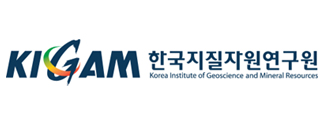
-
Korea Institute of Geoscience and Mineral Resource The Space Resources Exploration and Utilization Center (SREUC) is part of the Korea Institute of Geoscience and Mineral Resources (KIGAM) in Daejeon and is on the forefront of unlocking the potential resources of the planetary bodies in our solar system.
The SREUC developed the Korea Pathfinder Lunar Orbiter Gamma Ray Spectrometer (KGRS) to map elemental abundances and explore methods for on-site extraction of lunar resources. Furthermore, the KGRS data will contribute to advance our knowledge about the geological history and composition of the Moon. Furthering our understanding, we create realistic simulations of lunar, Martian, and asteroid environments – planetary analogs and simulants – to study them here on Earth. We develop Gamma-ray Spectrometer (GRS), Neutron spectrometer (NS), X-ray Spectrometer (XRS), Laser-induced Breakdown Spectrometer (LIBS), and lunar volatile extraction demonstrators and embed them into planetary payloads to explore and utilize planetary resources in-situ.
Beyond scientific research, SREUC fosters international collaboration through space policy initiatives and educational programs. We are a proud contributor to the Artemis program and other global endeavors, working towards a future where humanity thrives beyond Earth.

-
MOHAMMED BIN RASHID SPACE CENTRE (MBSRC) MBRSC is an advanced scientific and technological hub, responsible for making the UAE a world leader in space services and exploration.
Established in 2006, the Mohammed Bin Rashid Space Centre (MBRSC) started out with five engineers, who took it upon themselves to develop their capabilities and expand their knowledge in the field of space, relying on strong will and solid determination. Since then, the Centre has continued its journey to be the incubator of the UAE National Space Programme. The MBRSC is home to the UAE Satellite Programme, UAE Astronaut Programme, Mars 2117 Programme and Emirates Mars Mission, among others. Under its satellite programme, the Centre has built, developed, and operated several Earth observation satellites, including DubaiSat-1, DubaiSat-2 and KhalifaSat, the first satellite that was fully built by Emiratis in 2018. The Centre has also developed MBZ-SAT, the most advanced satellite in the region, which has been approved for launch no earlier than October
2024. MBRSC is also developing the Emirates Airlock, a crew and science airlock module for the Gateway lunar space station, humanity's first international outpost to orbit the Moon. Additionally, the UAE will also be sending an Emirati astronaut on a Moon mission. Under the UAE Astronaut Programme, MBRSC currently has four astronauts, two of who have undertaken missions to the International Space Station, including the longest Arab space mission in history by H.E. Dr. Sultan Saif AlNeyadi. The Mars 2117 Programme includes the Emirates Lunar Mission, UAE Analog Programme and Space Ventures.

-
Electronics and Telecommunications Research Institute (ETRI) Founded in 1976, ETRI (Electronics and Telecommunications Research Institute) plays a pivotal role in driving the nation's technological advancements in information and communications. ETRI successfully developed and demonstrated the ‘Delay/Disruption Tolerant Network Payload (DTNPL)’ onboard the KPLO (Danuri) for space internet technology demonstration. The Satellite Communication Research Division aims to become a global technology leader with the world’s strongest competitiveness in the fields of GEO, MEO, and LEO 6G satellite communications, navigation, and interplanetary space communications.

-
Green Optics Green Optics is founded in 1999.
The company has 230 employees and is located in Cheongju, South Korea. It manufactures ultra-precise optical components, modules, and systems related to displays, high-power lasers, and space, and exports ZnS materials to abroad.
In particular, it is Korea's leading optical company that produces 1.2 M mirrors for satellites, and designs and manufactures various optical systems for high-power laser systems.
It is a company that designs and manufactures space telescopes and is trying to go into space by manufacturing small satellites by itself.
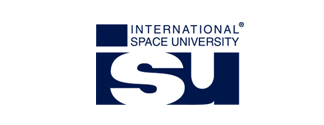
-
ISU The International Space University develops the future leaders of the world space community. It provides interdisciplinary educational programs to students and space professionals in an international, intercultural environment.
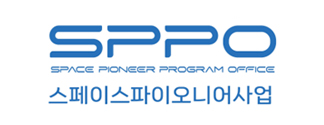
-
Korea Aerospace Research Institute, Space Pioneer Program Office The Korea Aerospace Research Institute is conducting the Space Pioneer Program, which develops national space key technologies under the supervision of the Korea AeroSpace Administration(KASA).
The Space Pioneer project is a program to develop 16 national space key technologies (3 launch vehicles, 7 satellite buses, and 6 satellite payloads) with a total project cost of KRW 211.5 billion over a 10-year period from 2021 to 2030, led by industrial companies that form industry-academia-research consortiums. Currently, industry-academia-research consortiums, consisting of 51 organizations with mainly 33 industrial companies, are developing 14 of the 16 space key technologies. This project is expected to significantly contribute to the development of space core technologies in order to link to space system projects and improve national space technology capabilities by localizing core components through self-reliance on space strategic technologies, expanding the utilization of achievements through demand-tailored technology development, improving national space technology capabilities, and laying the foundation for creating a virtuous cycle of space development ecosystem.
